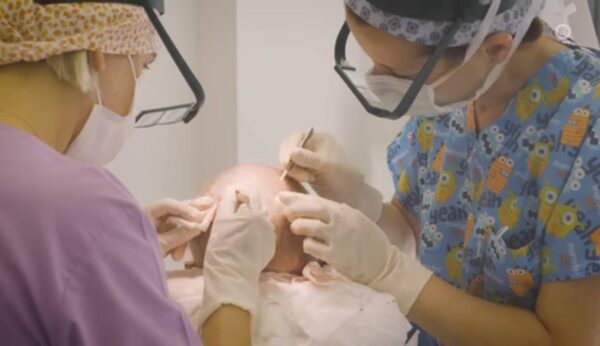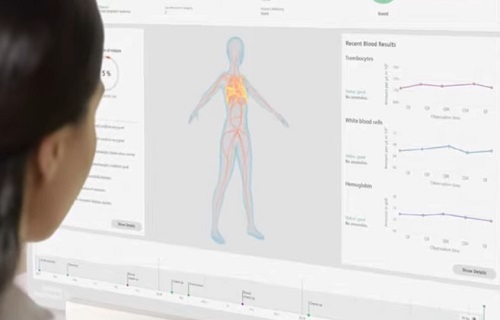Our human body consist and synchronization of a few main system such as the circulatory system, digestive system and respiratory system. All our organs work together with great harmony for supporting body in daily life. Beside these system we have a main structure: skeleton system. Skeletal system is consist of bones which small and big. Some of this bones connect each other with joint point or another words arthrosis. But as you know, this connection is not enough for stand without muscles. Our muscles not only support skeletal system but also support a lot of organs. With hide and protect veins, help our circulatory system. Mucles have a very important role in our body for life. We try to explain some of well known muscle tissues and some of very small but important muscle tissues.


What is Thenar ?
The thenar region is the area of the palm of the hand that is near the base of the thumb. It is the area where the muscles that control the thumb are located. The thenar muscles are responsible for movement of the thumb, including abduction (moving the thumb away from the palm), adduction (moving the thumb towards the palm), opposition (bringing the thumb across to touch the other fingers), and extension (straightening the thumb). The thenar muscles are important for fine motor control of the thumb and are used in activities such as grasping and holding objects. The thenar region is also known as the thenar eminence.
The thenar region is very important because it is responsible for the movement and fine motor control of the thumb. The thumb is an important part of the hand and plays a key role in many daily activities, such as grasping and holding objects, tying shoelaces, and using tools. The thenar muscles allow the thumb to move in a variety of ways and to perform these tasks with precision.
In addition to their role in hand function, the thenar muscles also play a role in maintaining the stability and balance of the hand and wrist. When the thenar muscles are weak or impaired, it can affect the ability to perform fine motor tasks and can cause problems with hand function. Therefore, it is important to maintain the strength and flexibility of the thenar muscles to support proper hand function.
Also you can find best diet programme for support your muscle developmen in below article:
There are a number of exercises that can be done to help improve the strength and flexibility of the thenar muscles. Here are a few examples:
- Thumb extension: Place a rubber band around your thumb and your index finger, and then straighten your thumb against the resistance of the rubber band. Repeat this exercise several times to help strengthen the thenar muscles.
- Thumb abduction: Hold your hand out with your palm facing down. Place a rubber band around your thumb and your index finger, and then try to move your thumb away from your index finger against the resistance of the rubber band. Repeat this exercise several times to help strengthen the thenar muscles.
- Thumb opposition: Hold your hand out with your palm facing down. Place a rubber band around your thumb and your index finger, and then try to bring your thumb across to touch your other fingers against the resistance of the rubber band. Repeat this exercise several times to help strengthen the thenar muscles.
It is important to perform these exercises slowly and with good form to avoid injury. You should also start with a low level of resistance and gradually increase the resistance as your muscles become stronger.
What is tfl muscle ?
The tensor fasciae latae (TFL) muscle is a muscle located in the outer aspect of the upper leg, near the hip joint. It is a small, thin muscle that originates from the outer edge of the ilium (one of the bones of the pelvis) and inserts onto the iliotibial band, a band of fibrous tissue that runs along the outer aspect of the thigh.
The TFL muscle is responsible for several movements of the hip, including abduction (moving the leg away from the midline of the body), external rotation (rotating the leg outward), and flexion (bending the leg at the hip joint). It also helps to stabilize the pelvis and keep the body upright while standing.
The TFL muscle is often overlooked in exercise programs, but it is an important muscle to strengthen as it plays a key role in maintaining proper alignment and stability of the hip joint. Some exercises that can help strengthen the TFL muscle include lateral leg raises, side-lying leg lifts, and leg press variations that focus on abduction. It is important to perform these exercises with good form to avoid injury and to gradually increase the resistance as the muscle becomes stronger.



What is skeletal muscle tissue ?
Skeletal muscle tissues are the muscles that are attached to the bones of the skeleton and are responsible for movement. They are also known as voluntary muscles because they can be controlled consciously. Skeletal muscles are made up of long, thin cells called muscle fibers, which are bundled together and held in place by connective tissue.
Skeletal muscles have a number of important functions, including:
- Movement: Skeletal muscles are responsible for movement of the body, such as walking, running, lifting, and reaching. They work in pairs, with one muscle contracting (shortening) to move the bone in one direction, and the other muscle relaxing to allow the bone to move back to its original position.
- Posture: Skeletal muscles help to maintain proper posture by holding the body in proper alignment.
- Protection: Skeletal muscles help to protect the body by providing support and stability to the joints and bones.
- Heat production: Skeletal muscles produce heat as a byproduct of muscle contraction. This can help to keep the body warm in cold environments.
There are over 600 skeletal muscles in the human body, and they make up about 40% of a person’s body weight. Skeletal muscles require regular exercise to maintain their strength and function, and they can be trained and developed through a variety of exercises, including weightlifting, resistance training, and cardiovascular exercise.
What is cardiac muscle tissue ?
Cardiac muscle tissue is a type of muscle tissue that is found in the heart. It is also known as involuntary muscle tissue because it is not under conscious control. Cardiac muscle tissue is made up of long, thin cells called muscle fibers, which are bundled together and held in place by connective tissue.
Cardiac muscle fibers are unique in that they have a branching structure and are connected to each other by specialized junctions called intercalated discs. These junctions allow the cardiac muscle fibers to contract in a coordinated way, which is necessary for the heart to effectively pump blood. Cardiac muscle fibers are also richly supplied with blood vessels and nerves, which help to nourish and regulate the muscle tissue.
Cardiac muscle tissue has a number of important functions, including pumping blood throughout the body, maintaining blood pressure, and regulating the heart rate. It is essential for the normal function of the circulatory system and is capable of continuous, sustained contraction. Cardiac muscle tissue is able to function even when the body is at rest and does not require regular exercise to maintain its strength and function. However, regular physical activity can help to improve the function of the cardiac muscle tissue and support overall cardiovascular health.
What is quadratus lumborum muscle ?
The quadratus lumborum (QL) muscle is a muscle located in the lower back. It is a long, thin muscle that runs from the lower portion of the spine to the upper part of the hip bone (ilium). The QL muscle is responsible for several movements of the lower back and hip, including lateral flexion (bending the spine to the side), extension (straightening the spine), and rotation (twisting the spine). It also helps to stabilize the spine and pelvis and is important for maintaining proper posture.
The quadratus lumborum (QL) muscle is often overlooked in exercise programs, but it is an important muscle to strengthen as it plays a key role in maintaining proper alignment and stability of the lower back and pelvis. Some exercises that can help strengthen the quadratus lumborum (QL) muscle include side planks, side leg raises, and bird dogs. It is important to perform these exercises with good form to avoid injury and to gradually increase the resistance as the muscle becomes stronger.

